12 Tea Tree Oil Benefits for Skin – What Makes Tea Tree Oil the Best Oil In the Universe?
Ever wondered if there is any product that eliminates all your skin woes? Well, you will immediately buy yourself a bottle of this essential oil once you get to know these impressive tea tree oil benefits for the skin!
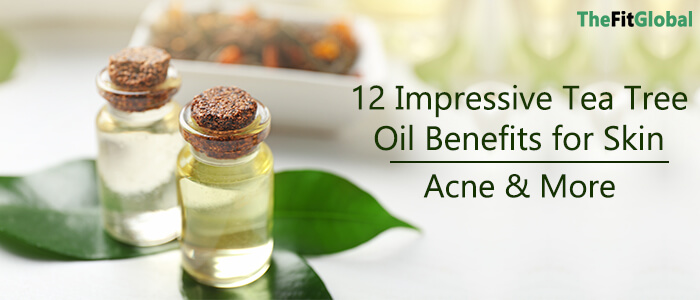
What Is Tea Tree Oil and What Is Tea Tree Oil Good For?
Tea tree oil is one of those essential oils that has gained popularity as a wound healer, insect repellant and the best anti-inflammatory agent to treat the most common skin problems like acne, athlete’s foot, angular cheilitis and many more!
Prepared from the leaves of Melaleuca alternifolia, (the tree which is native to Australia), the oil has been used as a traditional medicine for ages.
The inhabitants used to crush the leaves of the plant to acquire the oil and used this for various healing purposes.
Considering the high medicinal properties of the leaves, the oil is now being commercially traded all over the world to cure the simplest as well as the most dreadful skin problems.
Tea Tree Oil Benefits For Skin – A Natural Remedy For 12 Most Common Skin Problems!
Most of the skin problems are characterized by inflammation, bacterial or fungal infections and the best property of tea tree oil is that it contains anti-inflammatory, anti-bacterial and anti-fungal properties that will soothe the affected skin area helping in a gradual healing.
Caution – Tea tree oil is high in concentration and it needs to be diluted with a carrier oil. Applying the oil to the affected area directly causes severe itching and irritation which can worsen your condition.
Be careful while applying the oil around your lips and keep the oil away from the reach of kids because an accidental ingestion of the oil can cause some severe side effects such as diarrhoea and vomiting since the oil is poisonous in nature.
Here is the list of skin problems that can be treated using tea tree oil.
1. Tea Tree Oil Uses For Skin – The Best Acne Remedy!
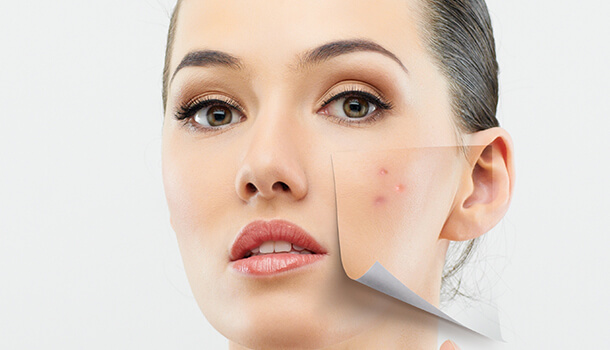
We all have to face the annoying problem of acne at some point due to various factors that influence our skin condition.
Acne can disappear by themselves as time passes by, but you will definitely need certain tips to reduce the inflammation and proper measures to prevent acne from spreading from one area to the other.
How to Use Tea Tree Oil for Acne?
Mix (3-4 drops) 5% tea tree oil with 10 ml witch hazel and dilute this well. Take a neat and clean cotton swab and dip this in the tea tree oil solution.
Gently dab the cotton on your acne two times in a day.
2. Tea Tree Oil To Soothe Eczema
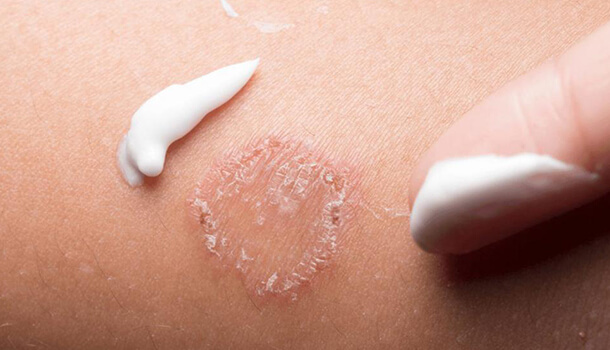
Eczema is an excessive dry skin condition which can be commonly seen in infants who are under 5 years of age. The symptoms continue to grow with the onset of age.
People who bear skin allergies, hay fever or asthma are more likely to pass the disease to their offspring.
Eczema is characterized by the symptoms like red, inflamed, leathery or scaly patches that may appear anywhere on the skin.
However, there is no complete cure for eczema but you can choose to reduce the intensity of the symptoms by following some natural remedies.
How to Use Tea Tree Oil for Eczema?
Take a teaspoon of coconut oil and add 3-4 drops of lavender oil along with the same quantity of tea tree oil to it.
Mix the ingredients well and gently massage the affected area with the oil to soothe the inflammation.
Follow the remedy one to two hours prior to your bath to prevent the symptoms of dryness and inflammation.
3. Tea Tree Oil to Cure Ringworm
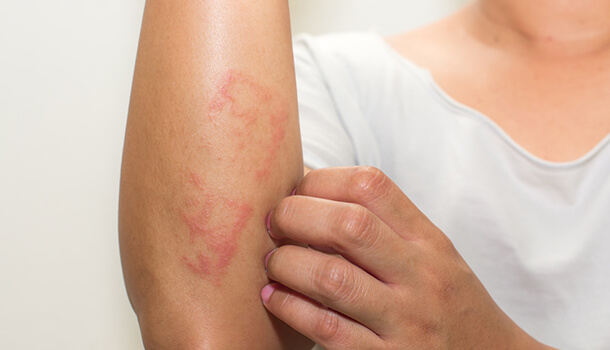
Ringworm is a fungal infection that can occur on any part of your body but it is can be most commonly identified in the groin area (on the inner thighs), hair, nails, scalp, the sole of the feet, palms or the beard.
The disease can be identified by red and scaly patches accompanied by itchiness and the patches eventually take the shape of a ring which is why it named as ringworm disease.
The disease is highly contagious and may linger around any of your daily usable objects such as towels, combs or brushes. If you have a pet, ensure that you clean your hands more often to prevent the attack of ringworm.
Can You Really Use Tea Tree Oil For Ringworm?
Using tea tree oil alone may not completely cure your problem unless you are applying the anti-fungal creams or the oral pills prescribed by your doctor.
Applying tea tree oil alongside may reduce the inflammation and itchiness since tea tree oil contains the best soothing and anti-fungal properties.
How To Use Tea Tree Oil For Ringworm?
Make a small patch test on the unaffected area before directly applying tea tree oil because you may develop a rash if your skin is too sensitive to withstand the properties of tea tree oil.
Start by cleansing the affected area with a neat and clean cloth. Dispose the cloth immediately as the infection is contagious and it may spread to your counterparts.
Take a few drops of tea tree oil and dilute it with 10ml of any carrier oil like coconut oil or olive oil. Use a cotton swab to rub the oil over the infected part twice or thrice a day to soothe the infection.
4. Benefits Of Tea Tree Oil For Face – To Remove Makeup
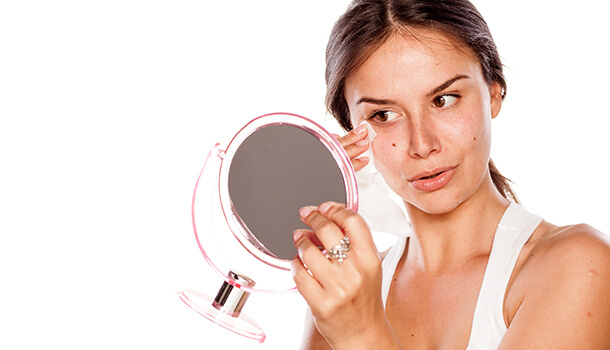
Your attempts to look gorgeous may go in vain if you apply the right makeup but do not remove it from your skin using the right methods.
Comedogenic make up can especially block the pores of your skin resulting in clogged pores which may, in turn, result in the emergence of acne, blackheads or whiteheads.
Here is one excellent tip to be followed which not only helps in wiping off the makeup but also helps in nourishing your skin in the best possible way.
How To Use Tea Tree Oil To Remove Makeup?
Take half cup of canola oil and add 8-10 drops of tea tree oil to this. Mix them well and store the solution in a neat and clean glass bottle for further use.
Dip a cotton pad into the solution and swipe it deep into your pores to remove the make-up. Wait for 5-10 minutes before using the best cleanser to rinse your face.
Do not attempt to use tea tree oil for face directly. Mix it with a carrier oil to prevent irritation and rashes.
Note – Using canola oil as the carrier oil can be highly beneficial since it is rich in vitamin C which helps in brightening your skin.
5. What Are The Benefits Of Tea Tree Oil For Healing Wounds?
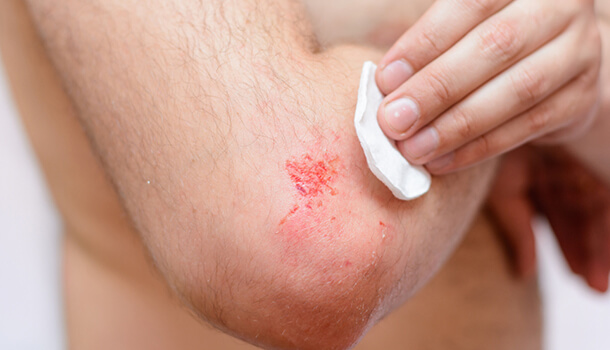
If you wish for the wounds caused due to unexpected cuts to heal quickly, you can make the best use of tea tree oil to reduce the duration of healing.
In fact, there were was a study conducted in relation to wound healing and the anti-bacterial properties of tea tree oil.
It was proved that people who used tea tree oil to treat the wounds could witness a much faster healing when compared to others who only relied on the creams suggested by the doctors.
How To Use Tea Tree Oil On Wounds & Cuts?
Hold the affected area under the water and rinse the wound thoroughly. Apply an antibacterial ointment onto the open wound, cut or the infection. Add a single drop of tea tree oil to the wound and rub the ointment over the wound.
You can follow the remedy before going to sleep daily till you witness a complete healing.
6. The Best Oil To Mitigate Psoriasis Symptoms
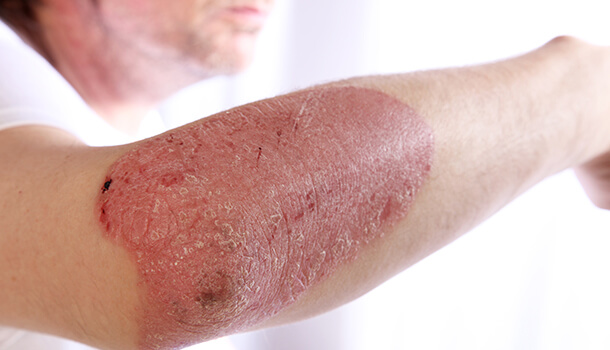
Psoriasis is a skin condition that can be identified by the red, scaly, inflamed and itchy patches on the skin which are caused due to an excessive building up of cells at that particular area.
Small and scaly spots can also be observed in the affected area. There may be no complete cure for psoriasis since it is a chronic condition but you can take the necessary steps to reduce the intensity of the symptoms.
Psoriasis can occur on any part of your skin including scalp and nails.
How To Use Tea Tree Oil For Psoriasis?
Mix a few drops (3-4) of tea tree oil into the bath so that the anti-inflammatory properties of tea tree oil can soothe your skin condition and reduce the symptoms of itchiness and inflammation.
If you suffering from psoriasis in your scalp region, you can add a few drops of tea tree oil into your regular shampoo and massage this into your scalp thrice a week to reduce the symptoms.
A gentle application of tea tree oil (2-3 drops) mixed with a carrier oil (coconut oil) will also help.
7. The Best And Natural Insect Repellants
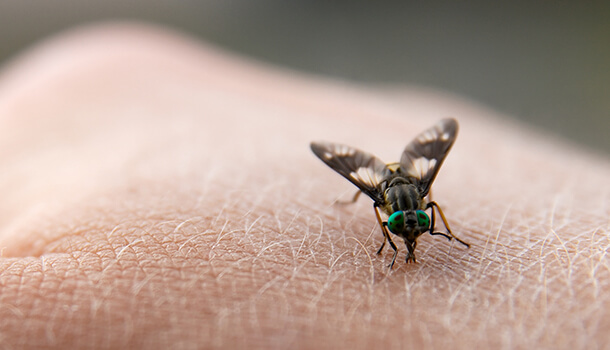
You may never know when a mosquito might bite you out of the blue! Taking preventive measures is the only way to stay unaffected from the dreadful symptoms and the dangerous aftermaths.
You can prepare your own mosquito repellant by using tea tree oil, a few tablespoons of coconut oil and required amounts of water.
To prepare a homemade mosquito repellant using tea tree oil, mix one teaspoon of tea tree oil into 4 tablespoons coconut oil and mix 100 ml water to this.
Dilute the quantities well and store this in a spray bottle. Spray the liquid on your skin before going to sleep to prevent the attack of mosquitoes.
You can also spray the liquid in your corridors where you grow plants to reduce the number of mosquitoes in your surroundings.
8. Best Oil To Soothe Athlete’s Foot

Athlete’s foot is a kind of fungal infection which is highly contagious. You may catch the infection through a close contact from a person who is already suffering from Athlete’s foot.
Stay away from warm and moist areas and try to avoid getting into public swimming pools to prevent the accidental attack of the fungus.
The infection is most commonly seen in athletes and it attacks the foot making the area dry, itchy, scaly and discoloured.
The infection may require some time to get completely healed but there are some natural steps to heal the problem quickly.
How To Use Tea Tree Oil For Athlete’s Foot?
Add 3-4 drops of tea tree oil into a tablespoon of witch hazel and use a cotton swab to apply the solution over the infected area.
Continue to follow this remedy thrice a day to get rid of a persistent itching and inflammation.
9. Tea Tree Oil Uses For Angular Cheilitis?
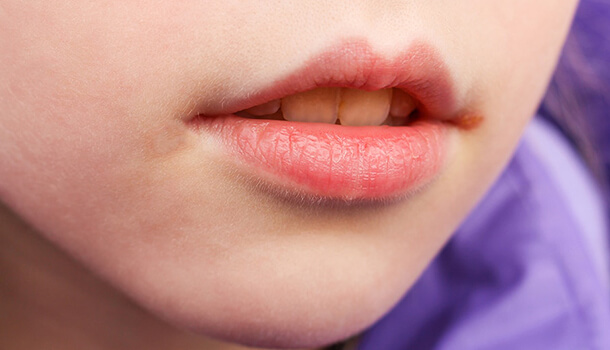
Angular Cheilitis can be embarrassing because of the visible inflammatory and patchy area at the corners of your mouth.
It is a kind of fungal infection caused due to the accumulation of saliva near the corners of your mouth which may later dry up making the region warm and moist which is favourable for the fungus to grow.
Angular Cheilitis is nothing to worry because it heals by itself within a few weeks but the pain can be intense making it difficult for you to rejoice your favourite foods.
Tea tree oil contains anti-fungal properties which may help in a quick and better recovery.
How To Use Tea Tree Oil For Angular Cheilitis?
Mix a few drops of tea tree oil into one tablespoon of castor oil or coconut oil and use a cotton swab to dab the solution gently at the corners of your mouth where you can see the inflammation.
Follow the remedy 2-3 times a day to obtain a huge pain relief.
10. Treat Your Cold Sores Using Tea Tree Oil
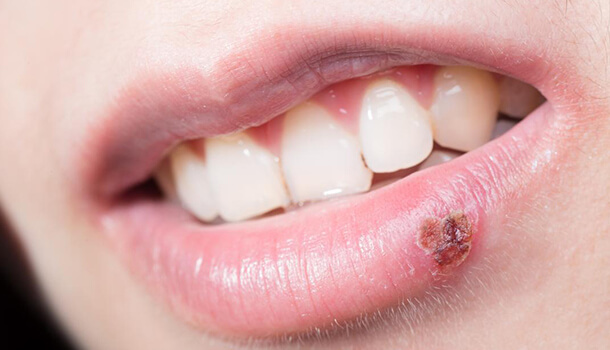
Cold sores are to attack everyone at some point in their lives. They usually appear as red, swollen blisters anywhere on your skin (more commonly around the lips) fingers, nose or on cheeks because of a herpes group of the virus.
The sores do not last for more than 10 days but are contagious which is why you must stay away from the public to prevent the spread of the sores to others.
How To Use Tea Tree Oil For Cold Sores?
Dilute a few drops of tea tree oil with jojoba oil or coconut oil and use a cotton ball to gently rub your cold sores with this anti-inflammatory solution.
Repeat this several times in a day to soothe your cold sores.
11. Acquire Soft Cuticles Using Tea Tree Oil
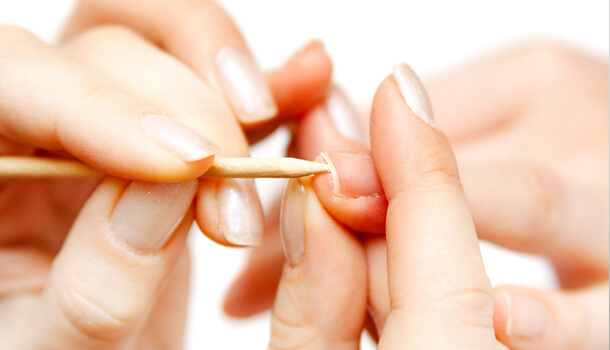
Tea tree oil uses are not only pertaining to your skin. You can also use the essential oil to obtain soft and beautiful cuticles if you make some time off your busy schedule to massage your cuticles on a daily basis.
How To Prepare Your Own Manicure Lotion?
You will need two carrier oils – Avocado oil and jojoba oil (one tablespoon each) and two essential oils – Lavender essential oil and tea tree oil (7-8 drops) each to prepare your massaging oil.
Mix all the ingredients in a dropper bottle and shake the bottle well. Apply a few drops of the oil onto your cuticles and massage the area with the fingers of your opposite hand.
Follow the remedy at least thrice a week to obtain soft, glowing cuticles within no time.
12. Get Rid of Toenail Fungus Using Tea Tree Oil
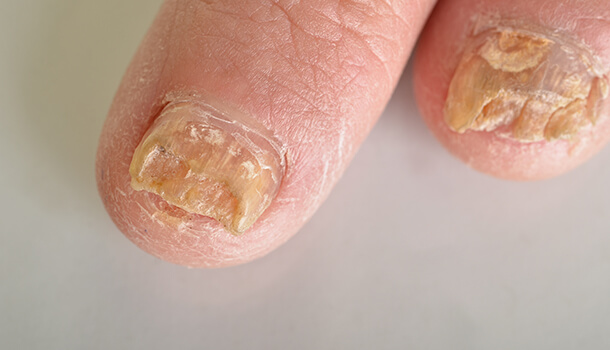
Toenail fungus can occur if the fungi starts growing around or under the nail. A warm and moist condition enables the growth of fungus which can be identified by a discoloured nail (whitish yellow) which can also emit a foul smell due to the fungus attack.
How to Use Tea Tree Oil for Toenail Fungus?
You can use a tea tree oil of 100% concentration directly on your toenail without diluting the oil since you are applying the oil directly onto your nail and not around your skin.
Ensure that you do not touch the surrounding areas of your skin to prevent skin irritation and burning.
Bottom Line
Skin problems are countless! Some of the infections heal by themselves while others may be chronic. Consulting your doctor and following a prescribed medication to treat your respective skin problem is however necessary!
But, you can decrease the time period of your healing and obtain a deep sense of relaxation from inflammation and itchiness that is caused due to most of the skin problems by simply knowing how tea tree oil benefits for skin.
This is because tea tree oil contains anti-inflammatory, antifungal and anti-bacterial properties.
Simple skin and beauty hacks can bring a major difference in resolving your skin problems. Tea-tree oil is one such beauty hack (with medicinal properties) that is definitely worth giving a try!



Comments
Leave a Comment